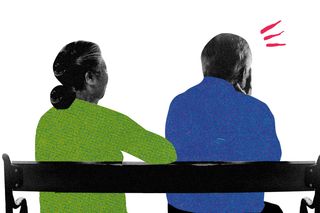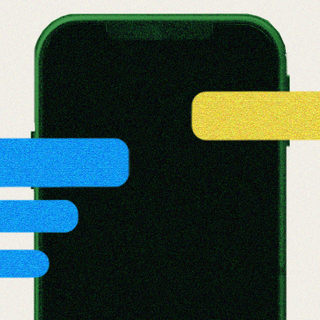
Partners’ Mental Health May Change — and Even Improve — Together: Study
The 12-year-long longitudinal study showed depression symptoms like anxiety or mood swings may evolve along similar lines in couples.

We know two things about love and mental health. Depression, and the many symptoms it presents as, is prevalent and dictated by gender, socioeconomic means, a whole number of variables; and depression actively changes the way people engage socially, determining how satisfied and content one feels in a relationship. This sets the stage for a more specific, compelling question to be asked: can one’s romantic partner change, evolve, or even decide the trajectory of how one experiences depression?
Couples can affect each other’s well-being, and new research identifies the patterns of mental health that play out in long-term relationships. Published in Translational Psychiatry recently, the longitudinal study involved data over 12 years that looked at mental health in long-term relationships. It’s possible for symptoms — like anxiety, mood swings, poor physical health, and helplessness — to change together among people in a relationship, at different speeds, and in some cases, evolve in the same direction too. In other words, if one person’s anxiety becomes less severe over time, so does the other person’s.
This is where social science collides with the world of clinical evidence: social psychology tells us that partners’ characteristics, decisions, values influence and merge over time, according to the interdependence theory. The premise lends a degree of specificity to the idea that dependence in relationships could be both ways. In some ways, the theory also explains why people stay in relationships in the long run — satisfaction runs in relationships only to an extent, after which, some people may weigh the good with the bad. That calculation will further decide if the partner stays in the relationship; depending on if the “cost” of a relationship outweighs the “rewards” one derives from it.
The lens of interdependence has most commonly followed the journey of an individual in a relationship — what they bring, their positive and negative traits, and how their personal mental health factored into the romantic dynamic.
Researchers of the current study, however, focused on the trajectory of a couple as a whole, seeking to understand how symptoms of depression played out for both partners, during the same duration. This aspect was key: Because the similarity of partners at one given time may be indicative of “how they are changing over time in relation to each other,” said study author Zsófia Csajbók, an assistant professor of psychology at Charles University in Prague. “This was particularly interesting in the context of mental health similarities, in which we can observe considerable fluctuations over time (people get better, seek help, bad things happen and they get worse, etc).”
Related on The Swaddle:
How People in Relationships Are Happier When They’re Growing As Individuals Too
So Csajbók and her team looked at people’s depressive symptoms every two years, for 12 years. The participants mostly included about 11,136 heterosexual couples from 16 European countries; these were mostly couples well in their 50s, a characteristic of the research that may also be a limitation since depressive symptoms may fluctuate in couples who are less established in their compatibility.
Out of the change in mental health issues observed, there were two notable ones: in 76.9% of the couples, both partners were recorded to present low depressive symptoms consistently, and in 7.8% of couples, symptoms increased together. Both partners’ symptoms either improved or worsened, over the course of 12 years. The rate of change in these symptoms varied notably though.
In other words, in the largest subset of the study, there was an interesting trajectory of how cues like anxiety, mood swings, hopelessness, and others varied: it evolved in the same direction for partners, signaling that a person’s symptoms over time can influence the others’ too.
As with mental health, relationships, and the many ways a person engages with both, there’s a lot left to be understood. The findings may vary significantly for people from non-Western societies; money, education levels, class, religion, and caste considerations may further impact one’s mental health and thus further orient the way a couple’s mental health evolves over time. Moreover, every individual’s depression is different, and research would need to apply a closer lens to understand why someone develops symptoms to add more insights.
Yet, the findings offer some perspective on what we know about partners’ individual health impacting the other. Research has shown how a couple’s physiology gets in sync the longer they stay in a relationship, what they called “couple concordance in health.” “It’s like finishing each other’s sentences, but it’s your muscles and cells that are operating in sync,” NPR noted in a 2016 article. While this area has focused on physical health, the current findings explore the concurrence of mental health, opening up a new way to approach treatment with respect to mental health: in identifying the trajectory of depression and symptoms of the couple as a whole.
“We hope that this will help provide better treatment, since it directs practitioners’ attention to long-term patterns of a bigger unit than the patient, patterns on the couples’ level… this research is going to help better identify those who are at risk,” the authors noted.
Saumya Kalia is an Associate Editor at The Swaddle. Her journalism and writing explore issues of social justice, digital sub-cultures, media ecosystem, literature, and memory as they cut across socio-cultural periods. You can reach her at @Saumya_Kalia.
Related


Why Ghosting Is Not Always a Form of ‘Emotional Abuse’
